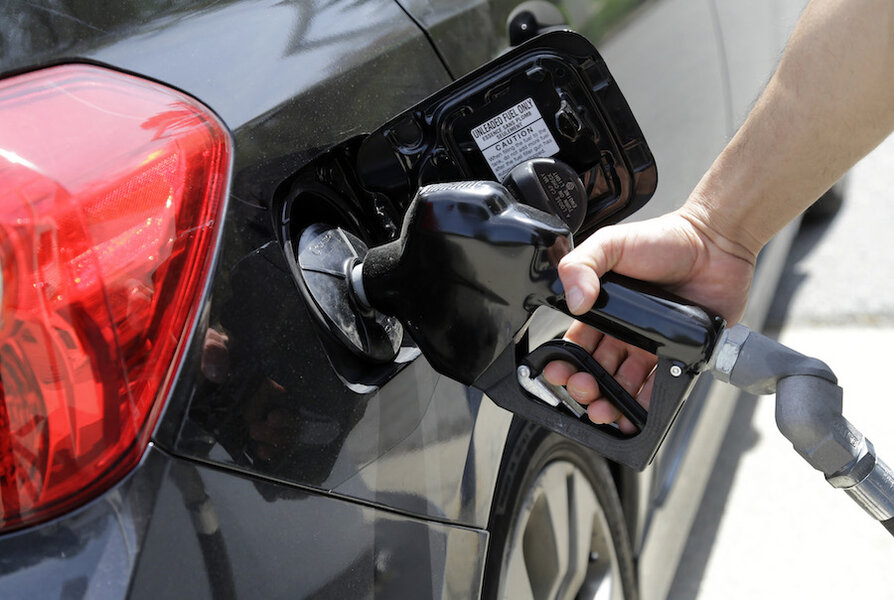Could electric cars run on liquid fuel?
Loading...
Electric cars may have made great strides recently, but thousands of researchers are still searching for a sustainable liquid fuel.
Such a fuel wouldn't require drivers who are used to pumping gas to alter their habits, and it would sidestep the issues of battery weight and charging times.
What if there was a sustainable fuel that could do all of that, and could be manufactured using the same process that plants use to remove carbon dioxide (CO2) from the air?
Artificial photosynthesis is enticing more researchers looking for alternative transportation fuels, according to a recent report in The Guardian.
This process uses sunlight to split water and carbon dioxide into hydrogen, oxygen, and carbon.
A catalyst then recombines those components into liquid fuels, with methanol one of the most likely to be synthesized.
Methanol is already used as a transportation fuel in China, where it's blended with gasoline in much the same way that corn-based ethanol is added to the U.S. fuel supply.
Chinese consumers pump a mixture of 15 percent methanol and 85 percent gasoline into their tanks, but there are also reportedly taxi and bus fleets that run on 85 percent methanol.
Now, researchers at the California Institute of Technology claim to have built a lab-scale device that converts 10 percent of the sunlight that reaches it into liquid fuel.
That's more efficient than natural photosynthesis, where plants generally convert just 1 to 2 percent of solar energy into "fuel" in the form of sugars and other carbohydrates.
But getting artificial photosynthesis out of the lab may prove difficult.
The process still reportedly requires the use of some fossil fuels, which increases its overall environmental impact.
It's also expensive. The preferred catalyst at the moment is platinum, which--at about $1,100 an ounce--may affect the commercial viability of artificial photosynthesis.
Current research revolves around the goals of finding a cheaper catalyst, improvingefficiency beyond the current 10 percent, and streamlining the process.
The splitting of water and CO2 molecules is currently done separately, but researchers want to do it all at once.
The Solar Fuels Institute will attempt to combine the two processes in a $250,000 prototype it hopes to complete by the end of the year.
If that is successful, the institute believes it can bring artificial photosynthesis to consumers within five years, and that the fuels it produces could be cost-competitive with gasoline in 10 years.
To achieve that goal, though, production will have to scale up. So researchers are casting a wide net when it comes to applications.
Everything from units that allow consumers to make fuel at home to solar-powered vodka distilleries are considered possibilities.
Meanwhile, the Department of Energy recently decided to renew a five-year, $75 million grant for Caltech's Joint Center for Artificial Photosynthesis--the largest research program of its kind in the U.S.
Elsewhere, Panasonic is working to synthesize formic acid, which can be used in hydrogen fuel cells.
A European research team hopes to produce jet fuel using solar energy, and researchers at Israel's Weizmann Institute of Science are also experimenting with fuel derived from artificial photosynthesis.
The prospect of a liquid fuel that is also renewable and produces fairly low carbon emissions is tantalizing, but that doesn't guarantee that artificial photosynthesis will ever make it out of the lab.
As with other experimental fuels and processes, it's worth noting that initial success doesn't automatically translate into commercial viability.
[hat tip: Joseph Dubeau]





